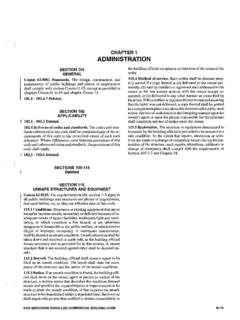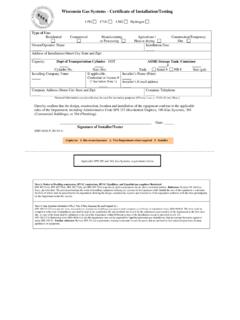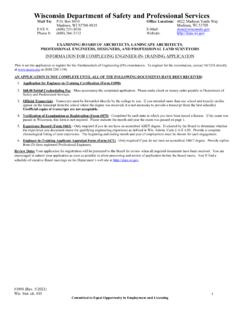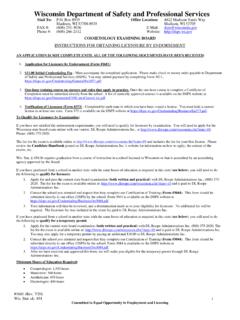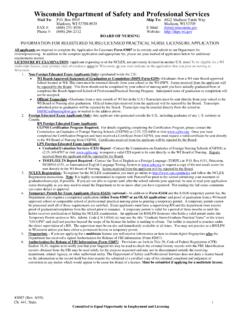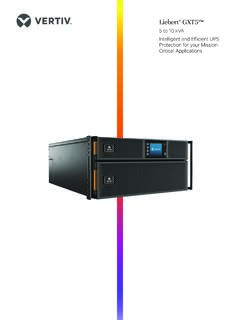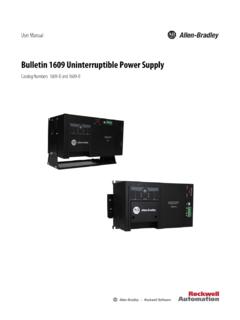Transcription of Emergency and Standby Power Systems and the IBC
1 Emergency and Standby Power Systems and the IBC NEC articles 700 and 701 and how they relate to Chapter 27 of the IBC What is the difference between Emergency and Legally Required Systems ? Emergency System An Emergency system provides illumination so occupants can safely exit the building in an Emergency . Additional requirements can be found in IBC for high rise buildings and NFPA 99 for Health Care Facilities. Legally Required System A Legally required system is designed to keep equipment operating that aids in rescue operations. Additional requirements can be found in IBC for high rise buildings and IBC Chapter 30-Elevators IBC Chapter 27 Electrical The requirements for where Emergency and Legally Required Standby Systems are to be installed are found in IBC though IBC Chapter 27 Some occupancies and equipment require both Emergency and Standby Power Systems , while some only require one or the other.
2 Examples: traffic control towers require Standby Power rise buildings require both Emergency and Standby Power signs are required to be supplied by Emergency Power Type, Class, and Level of Systems NFPA 110 has requirements for the Type, Class, and Level for Emergency and Legally Required Standby Systems , and how they are to be designated. Example: Type 10, Class 2, Level 1 is a standard designation for a typical NEC 700 Emergency System. The Type refers to the maximum time permitted before restoration of Power . Type Power restoration time U uninterruptible Power supply 10 10 seconds 60 60 seconds 120 120 seconds M Manual, no time limit The Class is the minimum time in hours the system is designed to run. Class Minimum operation time .083 .083 hours (5 minutes) .25 .25 hours (15 minutes) 2 2 hours 6 6 hours 48 48 hours X Other time, in hours, as required by code or user The Level is the equipment installation, maintenance, and performance requirements.
3 Level Installation 1 Failure of equipment to operate could result in serious injury or loss of life 2 Failure of equipment to operate is less likely to cause serious injury or loss of life High Rise Building requirements for Standby Power IBC Power and lighting for the fire command center High Rise Building requirements for Standby Power IBC Ventilation and automatic fire detection equipment for smokeproof enclosures High Rise Building requirements for Standby Power IBC Elevators in accordance with sections: 3003 3007 3008 Elevators used as an accessible means of egress 3003 Elevator Power and machine room ventilation and A/C Fire access elevator equipment, hoistway lighting, ventilation, and controller cooling 3008 Occupant evacuation elevator equipment, ventilation, and controller cooling High Rise Building requirements for Emergency Power IBC Exit signs and Egress illumination High Rise Building requirements for Emergency Power IBC Elevator car lighting High Rise Building requirements for Emergency Power IBC Emergency voice/alarm communications Systems High Rise Building requirements for Emergency Power IBC Automatic fire detection Systems High Rise Building requirements for Emergency Power IBC Fire alarm Systems High Rise Building requirements for Emergency Power IBC Electrically powered fire pumps Means of Egress Illumination IBC Section 1006 IBC requires illumination of the means of egress and exit discharge at all times the building is occupied.
4 IBC has the illumination level requirements for the means of egress(1 foot-candle at the walking surface). Means of Egress Illumination IBC Section 1006 IBC contains the conditions that the egress lighting be powered by the normal building supply except in the event of Power failure. Means of Egress Illumination IBC Section 1006 IBC states that the duration of the Emergency Power system shall provide Power for at least 90 minutes Means of Egress Illumination IBC Section 1006 IBC has the performance requirements for the Emergency lighting system. An average of 1 foot-candle and a minimum of .1 foot-candle at floor level. A maximum to minimum illumination uniformity ratio of 40 to 1

